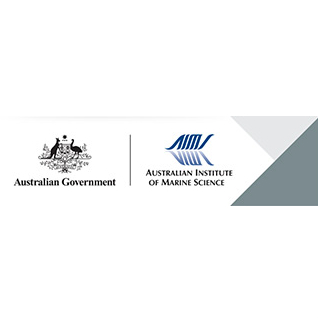Full description
The Great Barrier Reef Marine Monitoring Program for Inshore Water Quality (MMP WQ) has monitored inshore water quality of the Great Barrier Reef (GBR) lagoon since 2005 through the collection of in situ water chemistry data, along with time-series of temperature, salinity, fluorescence, and turbidity. This program is a partnership between the Great Barrier Reef Marine Park Authority, the Australian Government, the Australian Institute of Marine Science (AIMS), James Cook University (JCU), and the Cape York Water Partnership (CYWP). This metadata record also describes data from 2020-present collected by the Fitzroy Basin Marine Monitoring Program for Inshore Water Quality, which is funded by the partnership between the Australian Government’s Reef Trust and the Great Barrier Reef Foundation, and AIMS.The Paddock to Reef Integrated Monitoring, Modelling and Reporting Program (Australian and Queensland governments, 2018b) is used to evaluate the effectiveness of the implementation of the Reef 2050 Water Quality Improvement Plan (Australian and Queensland governments 2018a) and report progress towards goals and targets. The MMP WQ forms an integral part of the Paddock to Reef Program, along with other MMP components monitoring inshore coral, seagrass, and pesticides. The overarching objective of the MMP WQ is to ‘Assess temporal and spatial trends in inshore marine water quality and link pollutant concentrations to end-of-catchment loads’ (Australian and Queensland governments, 2018a).
The MMP WQ is designed to measure the annual condition and long-term trends in coastal water quality. Australian tropical coastal waters are characterised by high variability in river discharge during the wet season (November - March), as rainfall from low pressure systems causes river flood plumes to extend into the coastal ocean. River discharge is generally negligible during the dry season (April - October), a period of low rainfall. 'Routine' monitoring by the MMP WQ is conducted during ambient conditions of the wet and dry seasons outside of major flood events, while 'event' monitoring occurs in response to major flood events to capture conditions within flood plumes.
A summary of the Natural Resource Management (NRM) regions and associated focus regions where the MMP WQ operates is given below. The MMP WQ currently monitors a total of 55 routine sites (also sampled during events), with an additional 33 event sites monitored as required. The date ranges of routine monitoring, number of sites, and present frequency of sampling are also shown.
Cape York NRM (monitored 2017-present) focus regions:
Pascoe (6 sites, sampled 5 times per year)
Stewart (4 sites, sampled 5 times per year)
Normanby (6 sites, sampled 4 times per year)
Annan-Endeavour (5 sites, sampled 5 times per year)
Wet Tropics NRM (monitored 2005-present) focus regions:
Barron-Daintree (6 sites, sampled 3 times per year)
Russell-Mulgrave (5 sites, sampled 10 times per year)
Tully (6 sites, sampled 10 times per year)
Burdekin NRM (monitored 2005-present): 6 sites, sampled 9 times per year
Mackay Whitsunday NRM (monitored 2005-present): 5 sites, sampled 5 times per year
Fitzroy NRM (monitored 2005-2014 under MMP WQ, 2020-present under Fitzroy Basin program): 6 sites, sampled 10 times per year
From 2005 to 2014, monitoring occurred 3 times per year at ~3 sites in most regions listed above. An independent statistical review of the MMP in 2014 (Kuhnert et al., 2015) showed that additional sites and higher sampling frequency would provide additional statistical power. The current program design was implemented in February 2015 and includes most of the sampling sites in the pre-2015 design, allowing for the continuation of the long-term time-series. This program re-design was reviewed and its increase in power to detect change in inshore water quality was verified (Lloyd-Jones et al., 2022).
The MMP WQ uses in situ sampling to measure 17 key physico-chemical (salinity, temperature, Secchi depth, total suspended solids, and coloured dissolved organic matter), nutrient (ammonia, nitrite, nitrate, dissolved inorganic phosphorus, silicate, particulate nitrogen, particulate phosphorus, total dissolved nitrogen, total dissolved phosphorus, particulate organic carbon, and dissolved organic carbon), and biological (chlorophyll a) parameters. On every water sampling occasion, a Conductivity Temperature Depth instrument cast is done to collect a vertical profile of depth, salinity, temperature, and other water quality parameters. Data-logging instruments measuring time-series' of turbidity and fluorescence (a proxy for chlorophyll a) are deployed at 19 of the sites described above. Data-logging instruments measuring time-series' of salinity and temperature are deployed 9 of the sites described above. The details of each of these datasets are provided in the child metadata records attached to this parent record.
Lineage
Maintenance and Update Frequency: asNeededNotes
CreditData were collected under the Great Barrier Reef Marine Monitoring Program for Inshore Water Quality. This program is a partnership between the Great Barrier Reef Marine Park Authority, the Australian Government, the Australian Institute of Marine Science, James Cook University, and the Cape York Water Partnership.
Modified: 08 2025
User Contributed Tags
Login to tag this record with meaningful keywords to make it easier to discover
Select the child metadata record of interest to download data.
local : Data download for each data type is available in the attached child metadata records.
Lloyd-Jones LR, Kuhnert PM, Lawrence E, Lewis SE, Waterhouse J, et al. (2022) Sampling re-design increases power to detect change in the Great Barrier Reef’s inshore water quality. PLOS ONE 17(7): e0271930. https://doi.org/10.1371/journal.pone.0271930
doi :
https://doi.org/10.1371/journal.pone.0271930![]()
Australian and Queensland governments, (2018a). Reef 2050 Water Quality Improvement Plan 2017-2022. Queensland government, Brisbane, Australia.
GBR_AIMS_MMP_WQ-Sites (aims:GBR_AIMS_MMP_WQ-Sites)
uri :
https://geoserver.apps.aims.gov.au/aims/wms![]()
MMP WQ Annual reports from 2005 - present
Australian and Queensland governments, (2018b). Paddock to Reef Integrated Monitoring, Modelling and Reporting Program: Program Design 2018-2022. Queensland government, Brisbane, Australia.
QA/QC Reports for the Marine Monitoring Program from 2005 - present
Great Barrier Reef Marine Park Authority webpage giving an overview of the MMP WQ
Great Barrier Reef Marine Monitoring Program for Inshore Coral Reefs metadata page
uri :
https://apps.aims.gov.au/metadata/view/c30cfb2d-46be-4837-9733-9bb60489b65b![]()
eAtlas webpage giving general information about the MMP WQ
uri :
https://eatlas.org.au/rrmmp/gbr-aims-inshore-water-quality![]()
- global : 2b2aa4e4-1368-49e0-8b25-1559ee297854


